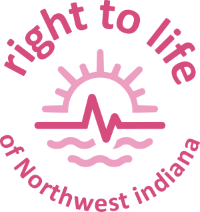
Fetal Experimentation and Eugenics

Of all human beings, pre-born human life is most vulnerable to abuse and exploitation. While LaPorte County Right to Life welcomes legitimate medical advances to alleviate suffering and cure disease, those advances must never result from the intentional death and destruction of unborn human beings. The foundation for this baseline principle of medical ethics comes from the Hippocratic Oath.
Fast Facts
- Stem Cells are cells that can divide indefinitely in culture, manufacturing other cells like red blood cells, white blood cells, platelets and skin cells that perform designated tasks for the human body.
- Adult stem cell research, which does not destroy or harm human life, has resulted in over 70 treatments for diseases in humans. In contrast, embryonic stem cell research involving the destruction of human embryos has not resulted in the treatment of any disease in humans. [1]
- Scientists have found ways to make adult stem cells work like embryonic ones.[2]Such developments make irrelevant the claims that embryonic stem search is “necessary.”
- In Ohio, the experimenting on or sale of “baby parts” is prohibited. [3]
- The National Institutes of Health budgeted $21 million for fetal tissue research in 1999. [4]
- It is estimated that the worldwide market for cell lines and tissue cultures brought in nearly $428 million in corporate revenues in 1996. [5]

Content provided courtesy of ohiolife.org
[1] Do No Harm: The Coalition for Research Ethics, “Benefits of Stem Cells to Human Patients: Adult Stem Cells v. Embryonic Stem Cells,” stemcellresearch.org, 11 April 2007, Do No Harm: The Coalition for Research Ethics, Web. 24 July 2012, <http://www.stemcellresearch.org/facts/treatments.htm>.
[2] Dan Vergano, “New method makes adult cells act like embryoinc ones,” usatoday.com, USA TODAY, 1 October 2010, Web. 24 July 2012, <http://www.usatoday.com/tech/science/2010-10-01-cell01_ST_N.htm>.
[3] O.R.C. 2919.14.
[4] Frank York, “Fight Raging Over Baby Part Sales,” WND.com, World News Daily, 17 November 1999, Web. 24 July 2012, <http://www.wnd.com/1999/11/3869/>.
[5] York.

